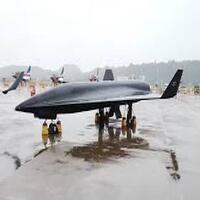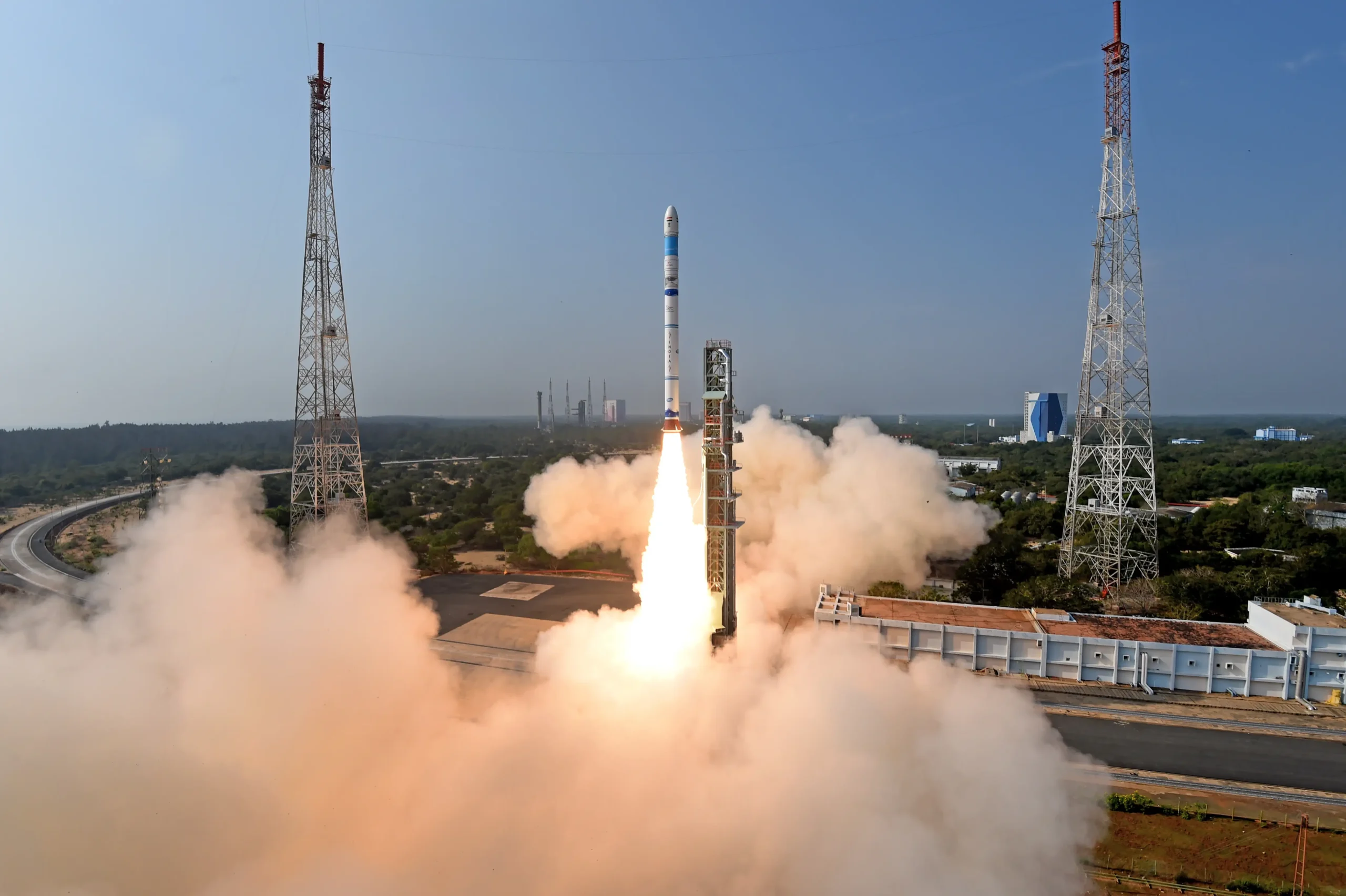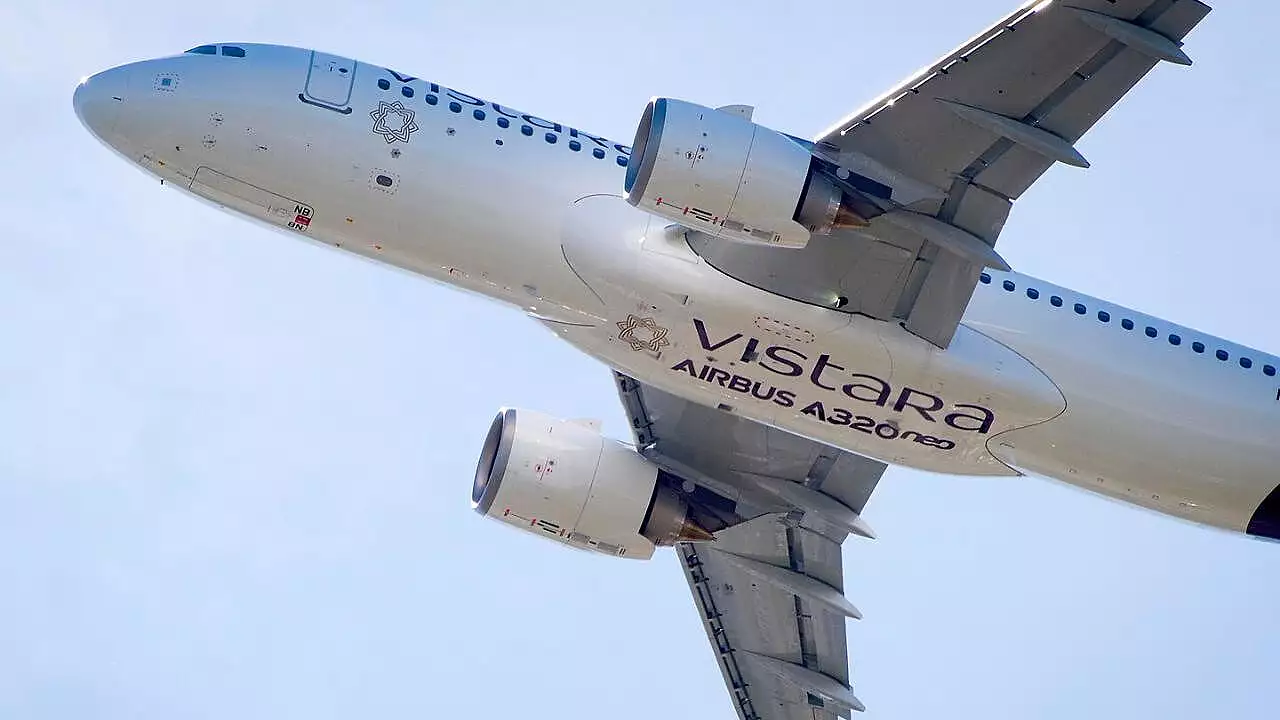
The FWD 200B is India’s first indigenous combat unmanned aircraft, demonstrating the rise of Indian innovation.

India has advanced significantly in the field of military in recent years, especially with regard to unmanned aerial vehicles (UAVs). With the introduction of the FWD 200B, India’s first homegrown combat unmanned aircraft, the country’s technological prowess has advanced significantly. The innovative UAV was created by a vibrant Indian startup that has been causing quite a stir in the defense sector.
This bomber, designed by Flying Wedge Defence and Aerospace (FWDA), can carry out accurate airstrikes and bombing missions since it is outfitted with integrated missile systems and sophisticated surveillance capabilities.
Impressive specs set the FWD 200B apart, especially when you take into account its small size. This UAV is powerful and nimble, measuring 3.5 meters (12.1 feet) in length and 5 meters (16.4 feet) in wingspan. It can carry a sizable payload of 30 kg and has a maximum take-off weight (MTOW) of 102 kg.
The FWD 200B is built for high-altitude operations; it can reach a maximum height of 15,000 feet and cruises at a comfortable 12,000 feet. With a top speed of 250 km/h, it can travel at a comfortable 152 km/h during cruise. With a range of up to 800 km and the ability to operate continuously for seven hours, the UAV’s endurance is equally remarkable. Its adaptability further enhances as it takes off from runways as short as 300 meters, making it ideal for deployment from shorter airstrips and remote sites.
The notable achievement of cost reduction is a noteworthy aspect. The cost of an imported US Predator drone is hefty—up to Rs 250 crore—but the FWD-200B, which is built in India, will only cost you Rs 25 crore.
Success after Multiple Setbacks
An example of India’s increasing technological independence in defense is the Medium Altitude Long Endurance (MALE) unmanned combat aerial vehicle (UCAV), or FWD 200B. Following difficulties with foreign suppliers, such as Turkey’s rejection to sell India the Bayraktar UAV and protracted delays in the US Predator drone agreement, the FWD 200B will quench the thirst of unmanned drone in the indian defence. India’s position in unmanned warfare will strengthened by the FWD 200B, which is estimated to cost only a tenth of US Predator drones.
The Goals of the FWD 200B
The goal of developing the FWD 200B is to promote domestic innovation while lowering reliance on foreign defense hardware. This startup sought to develop a combat UAV that could satisfy the unique requirements of the Indian Armed Forces. It was led by a group of committed engineers and defense specialists. They envisioned an aircraft that would be economical, technologically sophisticated, and flexible enough to be used in a range of combat situations.
Features of the FWD 200B
The FWD 200B is a formidable addition to India’s defense arsenal because of its cutting-edge features and state-of-the-art design. Here are a few of the noteworthy attributes:
- Ability to Stealth: Because of its sophisticated stealth design, the FWD 200B is essentially undetectable to enemy radar. It can operate in difficult settings undetected thanks to its low radar cross-section, giving it a tactical edge in combat missions.
- Extended Range and Endurance: The remarkable endurance and range of the FWD 200B is one of its main features. The UAV can travel great distances without frequently refueling because it can stay in the air for extended periods of time. It is therefore perfect for deep penetration strikes and long-range reconnaissance operations.
- Cutting Edge Armament: With its assortment of precision-guided missiles, the FWD 200B can hit enemy targets with extreme precision. It can conduct both offensive and defensive missions thanks to its onboard armament, which includes electronic warfare systems, smart bombs, and air-to-ground missiles.
- Independent Function: The FWD 200B can function independently thanks to advanced AI technology, which lowers the need for human interaction. This function is especially helpful for missions that pose a high danger to human pilots. The AI system of the UAV is capable of making judgments in real time, adjusting to shifting combat circumstances, and completing missions with little assistance from ground control.
Read Also: ISRO now has one more launch vehicle ‘SSLV’ in its inventory, completes its 3rd final development flight
The Development Process: From Idea to Implementation
The FWD 200B’s path from idea to reality is a tale of tenacity, creativity, and teamwork. This UAV’s startup has several difficulties, including finding capital to managing intricate regulatory obligations. They stayed on course, nevertheless, because of their unflinching dedication to their goal.
Research and Development
A great deal of research and development (R&D) went into the first phase of development. To guarantee that the FWD 200B fulfilled the highest requirements for performance and dependability, the team made significant investments in R&D.
There were challenges along the way in the development of the FWD 200B. To realize its objective, the business had to overcome a number of obstacles, both financial and technical.
Technical Difficulties
This kind of military UAV could only be developed domestically by overcoming many technical obstacles. Every facet of the FWD 200B’s design presented a different set of difficulties, from guaranteeing the UAV’s stealth characteristics to incorporating cutting-edge AI algorithms. The group has to continuously come up with new ideas and solutions for challenging issues.
Resources and Funding
Obtaining sufficient finance was another significant obstacle for a company. Combat UAV development is a costly endeavor that necessitates large expenditures for manufacturing, testing, and research and development. The venture successfully secured capital from both public and private sponsors, who convinced by the project’s potential to transform India’s military capabilities.
Regulatory Acceptance
Another crucial step in the development process was navigating the regulatory environment. To move on with testing and production, the firm needed to secure a number of clearances and approvals from defense authorities. This necessitated careful planning and following strict guidelines.
Strategic Consequences for India’s Military
The FWD 200B’s successful development and implementation will have a significant impact on India’s military policy. The FWD 200B strengthens India’s defense technological independence by being an indigenous combat UAV, which lessens the need for expensive imports. This is consistent with the government’s ‘Make in India’ campaign, which attempts to increase indigenous production and decrease reliance on outside vendors.
Boosting Security at the Border
India’s border security is strengthened by the FWD 200B in particular. Its capacity for long-range surveillance and strike missions makes it the perfect instrument for keeping an eye on threats and addressing them throughout the nation’s vast frontiers. The UAV can be swiftly and effectively deployed, giving India’s border defense more effectiveness and real-time intelligence.
Capable of Counter Terrorism Operations
The UAV is a valuable tool in counterterrorism operations due to its sophisticated capabilities. The FWD 200B is capable of identifying and eliminating terrorist threats in remote and unreachable areas where conventional military operations are challenging. Because of its precision-guided armament, which guarantees less collateral damage, it is the preferred weapon for targeted attacks.
Increasing Defense Exports from India
Additionally, the FWD 200B can establish India as a major force in the world defense industry. Other nations aiming to improve their defense capabilities are probably going to be interested in the UAV because of its advanced features and affordable price. Exporting the FWD 200B can provide India’s defense sector with new opportunities and boost the nation’s economy.
Advanced AI Capabilities
More sophisticated AI technologies are anticipated to be included in upcoming FWD 200B models, providing even more autonomy and decision-making power. This will further lower the risk to individuals by enabling the UAV to conduct more complex missions with less assistance from humans.
Developments of New Variants
In response to changing defense requirements, the firm intends to create additional FWD 200B variants designed for particular missions. Specialized versions for high-altitude reconnaissance, electronic warfare, and marine surveillance may be among these variations.
An important step toward India’s goal of being self-sufficient in defense technology is the FWD 200B. The Indian startup’s successful development of the military unmanned aircraft is a clear testament to their inventiveness and perseverance. In addition to bolstering India’s defense capabilities, the FWD 200B signals the country’s ascent to the forefront of UAV technology.
Read Also : Google’s Gemini, Will Transform Your Digital Experience by Improving Search, Productivity, Security, and Photos and more




